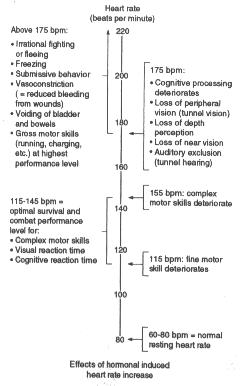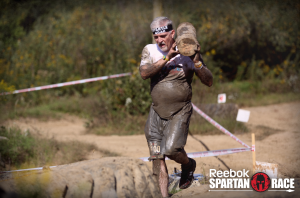 No, not that kind. What I’m talking about is using other forms of physical exercise to enhance and improve our martial arts training.
No, not that kind. What I’m talking about is using other forms of physical exercise to enhance and improve our martial arts training.
Why, you ask? Let’s start with one of my favorite little tidbits of information that I try hard to impart on my students and anyone else with a desire to get a grasp on common sense as it relates to self-defense: The bad guys do not present themselves to you from a distance of 25ft or more away. They do not announce their presence or intentions. They do not come at you from straight in front, in a well lit situation, on a level and obstacle free floor. They don’t perform that mutual bow that signals they will “attack” in a controlled manner with no intent to cause you harm. No, the attack will likely be happening before you know what is going on. It will be sudden, violent and will keep coming until you submit, are rendered incapable of defending yourself or surrender whatever it is of value that they want – or you are able to defend yourself equally hard and violently. (For some excellent reading on how this works in the real world, check out “Meditations on Violence” by Rory Miller.)
Uh oh.
Now take a gander at the chart to the right. It summarizes what happens to your level of skill, both physical and mental, as your heart rate escalates due to the release of adrenaline. Notice that your optimal level is between 115 and 145 beats per minute. Go above 155 bpm and things start going downhill. Exceed 175 and you’re in deep doo-doo, as in possibly freezing up altogether.
Not a very pretty scenario, is it? But what to do?
First and foremost is to periodically make your training as realistic as possible. Get out of the dojo once in a while, to a park or a backyard. Make sure there are trees, hills, holes and plenty of junk laying around to get in your way and that you have to work around. Practice with the attacker coming at you from different angles…..hard. See what works when you’re on the downhill side of that attacker vs. being on the uphill side. Get used to the idea early on that you’re going to get tagged and that your favorite dojo techniques may not be as surefire as you thought they were. Feel the difference when trying to move and perform techniques, especially kicks, when you’re in trail shoes vs. barefoot on the mats. Learn how to use the obstacles and differences in elevation to your advantage. I can go on for another thousand words here, but you get the idea.
Secondly, and more related to the title of this missive, get to the gym as well as the dojo. Get to the track. Get to the trails. GET IN THE BEST EVERALL SHAPE YOU CAN!!!! Can you do this just in the dojo by working really, really hard? Yes, to a degree. I have two counter-points to this train of thought, though:
A) See the above regarding they fact that real combat does not follow a set formula. How good is your technique going to be if you have to bound up two flights of stairs first? What if you first have to cover 100 yards quickly to come to the aid of a third party? What if you’re under attack by multiple individuals and have to get out of Dodge as fast as you can? What if you can’t get out of Dodge and you have to fight full-out for a minute? Two minutes? Fight for 20 seconds, run a block and fight some more because they keep coming? Here’s a good test……… Do 30 burpees and immediately (as in no breather) follow that with one of your higher kata. Can’t do 30 burpees? Do 20. Do 75 jumping jacks. Do whatever you can physically tolerate to get your heart beating like a jackhammer. Be gasping for breath, not just breathing hard. Do not wipe the sweat from your eyes. Do not fix your gi. Just go. How well did that work? The first time I did this (using Saifa) I literally fell down. It was not pretty. It was not good. It would not have been effective had I needed to defend myself. The next time was just as bad. It’s only very slowly getting better. What it is accomplishing for me is that I at least know what it feels like to be this gassed and still have to go. Only do this once or twice a month. It is a test of your conditioning rather than an exercise program in itself.
B) No form of exercise is complete. Long-distance running will not do much for your physical strength. Lifting five days a week won’t be worth much if you have to cover a moderate amount of distance in a hurry. Doing any one thing too much and too often results in imbalances and eventually to injuries. Obstacle course running has become one of my favorite ways of mixing things up. You run hills, you climb, you crawl, you carry heavy weights over odd terrain (or over large tractor tires). What is has also done is improve my functional strength as compare to “gym” strength. It’s helping me pare down my weight (despite what the picture shows) and has done wonders for my leg strength.
We don’t get the easy way out when it comes to defending ourselves. We don’t get to choose the time or the place or the adversary. We don’t get prior knowledge of what the attack is going to be. No amount of practice gets us fully prepared for the reality. Our best preparation is to get as far out of our comfort zone in terms of all of our training, self-defense as well as physical, as much as we can. Keep training hard. Reap the benefits.
Ossu!
